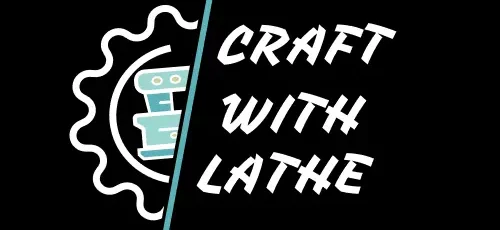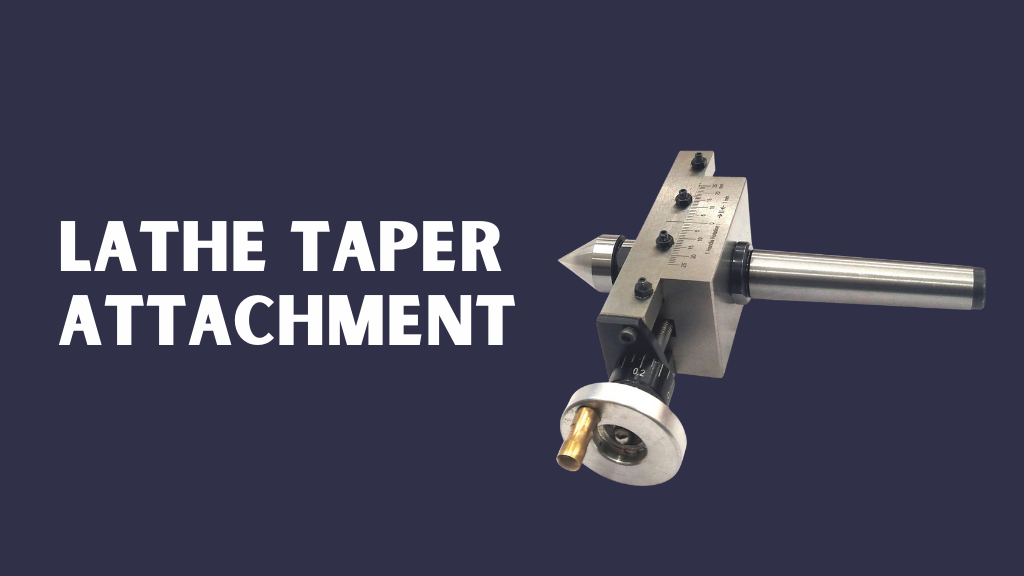Machining is one of the most critical fields in manufacturing and engineering. A lathe is often called the mother of all machine tools because of its ability to perform a variety of operations including turning, facing, threading, boring, and taper cutting. Among all the operations carried out on a lathe, taper turning holds a special place because tapers are widely used in mechanical assemblies. To produce accurate and consistent tapers, machinists often use a special accessory known as a lathe taper attachment.
This detailed guide explains what a lathe taper attachment is, its purpose, its mechanism, advantages, and how it compares to other taper turning methods. By the end, you will have a complete understanding of why this attachment is considered a must-have tool for machinists and manufacturers.
What is a Taper in a Lathe?
In machining, a taper refers to a conical shape on a cylindrical workpiece where the diameter gradually decreases from one end to the other. Instead of being a straight cylinder, the workpiece becomes a frustum of a cone. Tapers are critical in machine design because they allow parts to fit together securely without relying solely on fasteners.
Common Applications of Tapers
- Drill shank fittings that need to be seated firmly inside a machine spindle
- Machine tool arbors and collets that require accurate alignment
- Automotive parts such as shafts, steering components, and bearings
- Aerospace components where precision and secure fitting are necessary
Tapers allow for easy assembly and disassembly while still providing high strength and accuracy. This is why the ability to cut a taper on a lathe is an essential skill for every machinist.
What Does a Taper Attachment Do on a Lathe?
A taper attachment is a mechanical accessory mounted on the back side of the carriage of a lathe. Its primary function is to guide the cutting tool along an angled path relative to the lathe bed. This controlled movement allows the tool to cut a precise taper automatically.
Without a taper attachment, machinists must rely on manual methods such as the compound rest or offset tailstock. These methods are suitable in certain conditions but lack the efficiency, accuracy, and repeatability of a taper attachment.
Key Functions of a Taper Attachment
- Cuts long tapers with high accuracy
- Eliminates the need for resetting the tailstock or compound slide repeatedly
- Reduces human error during taper turning operations
- Makes it easier to produce internal and external tapers
- Improves productivity in high-volume machining environments
What is a Taper Turning Attachment?
A taper turning attachment is essentially the specific name of the device used to cut tapers on a lathe machine. It consists of a guide bar set at a particular angle. The cross slide of the lathe connects to this bar, and as the carriage moves, the guide bar forces the cross slide to move laterally at a controlled angle.
This combination of longitudinal feed from the carriage and transverse feed from the taper attachment ensures that the tool follows an angled path. The result is a precisely machined taper surface.
Taper Turning Methods in Lathe Machines
There are multiple methods of taper turning in a lathe, and each method has its advantages and limitations. Let us look at them in detail.
1. Compound Rest Method
In this method, the compound rest of the lathe is swiveled to the desired taper angle. The cutting tool is then fed manually using the compound slide handle.
- Advantages: Simple to set up, suitable for short and steep tapers.
- Limitations: Cannot be used for long tapers, depends heavily on operator skill.
2. Offset Tailstock Method
The tailstock is set off-center from the lathe axis, causing the workpiece to rotate at a slight angle.
- Advantages: Suitable for long but shallow tapers, does not require extra accessories.
- Limitations: Accuracy is compromised, setup is time-consuming, and it weakens the center alignment of the workpiece.
3. Taper Attachment Method
This method uses the taper turning attachment for guiding the tool.
- Advantages: Accurate, repeatable, suitable for both internal and external tapers, ideal for long tapers.
- Limitations: Requires the attachment, slightly more expensive than manual methods.
The Lathe Taper Turning Process
Using a taper attachment on a lathe involves a systematic setup to achieve accurate and consistent results. The attachment allows machinists to cut tapers without constant manual adjustments, making the process smoother. Each step in the setup ensures that the taper is formed correctly while minimizing errors during operation.
-
Install the Taper Attachment
The first step is to mount the taper attachment securely at the back of the carriage. Once in position, it is connected to the cross slide to provide the required sideward movement during cutting. A firm installation is important to prevent vibration and maintain accuracy. This setup lays the foundation for precise taper turning.
-
Set the Angle
After the attachment is installed, the guide bar must be adjusted to the required taper angle. This is usually done by following the graduations provided or by calculating the angle using the taper ratio. The angle setting directly influences the shape of the final workpiece. Careful adjustment at this stage ensures smooth and correct machining.
-
Lock the Cross Slide Nut
With the angle set, the cross slide nut should be locked in place before machining begins. Locking prevents the cross slide from moving independently and ensures that its motion is controlled only by the taper attachment. This restriction is essential for accuracy. Without it, the taper could end up uneven or imprecise.
-
Start Machining
Once everything is secure, the actual cutting process can begin. As the carriage moves longitudinally along the bed, the taper attachment automatically shifts the cross slide sideways. This combined motion produces the desired taper on the workpiece. The automatic feed minimizes operator input while maintaining consistency throughout the cut.
-
Benefits of the Process
The taper turning process with an attachment offers several advantages over manual methods. It provides greater accuracy, making it easier to produce identical tapers for repeated jobs. The automatic motion also reduces operator fatigue and saves time during production. For workshops, this translates to higher productivity and reliable results
External and Internal Taper Turning
A taper attachment provides the flexibility to cut both external and internal tapers with accuracy. Understanding the difference between these two operations is essential for machinists working on a variety of components.
1. External Taper Turning
External taper turning is performed on the outside diameter of a workpiece. Common examples include shafts, pipes, machine tool arbors, and bolts. These tapers are often used where a secure friction fit or a self-centering alignment is required.
- Typically performed with a single-point cutting tool
- Easier to machine compared to internal tapers because of open access
- Requires correct alignment of the workpiece and steady tool feed to achieve a smooth finish
2. Internal Taper Turning
Internal taper turning is carried out on the inside surface of a workpiece, usually with the help of a boring bar and tool. This method is widely used in producing sockets, tapered holes, and precision tool holders.
- More challenging than external tapers due to restricted tool access
- Requires a rigid boring tool to minimize vibrations and deflection
- Precision is critical because even a slight error can affect the fit of the mating component
Both external and internal tapers demand precise alignment of the lathe components. However, internal taper turning usually requires more care and operator skill, especially for deep holes where tool rigidity and chip removal become important factors.
Taper Attachment Mechanism Explained
A taper attachment functions through a combination of a sliding block and a guide bar. This mechanism allows the cutting tool to follow a controlled path while the carriage moves, making it possible to machine accurate tapers automatically. By eliminating the need for constant manual adjustments, it ensures precision and reduces operator workload.
1. Guide Bar Adjustment
The process begins with the guide bar, which is positioned at the required angle for the taper. This angle can be set using graduations on the attachment or calculated based on the taper ratio. Once secured, the guide bar acts as the reference line that dictates the sideways movement of the cutting tool.
2. Role of the Sliding Block
The sliding block is the connecting link between the cross slide and the guide bar. As the carriage travels longitudinally along the lathe bed, the sliding block forces the cross slide to shift sideways in accordance with the set angle. This coordination ensures that the cutting tool consistently follows the taper path.
3. Automatic Taper Machining
With the guide bar fixed and the sliding block engaged, the taper attachment controls the entire cutting process automatically. The tool moves at the exact angle determined by the setup, producing a smooth and precise taper. This method removes the need for operator intervention, improving both accuracy and efficiency in machining operations.
Advantages of Lathe Taper Attachment
Using a lathe taper attachment offers several benefits that make it a preferred choice over traditional taper turning methods. These advantages are especially valuable in professional machine shops where precision, speed, and consistency are top priorities.
-
High Accuracy
A taper attachment allows the cutting tool to follow a controlled and precise path, producing uniform tapers with very little margin for error. Unlike manual methods, which depend heavily on operator skill, the attachment guarantees repeatable accuracy even in large-scale production.
-
Versatility
One of the greatest strengths of a taper attachment is its flexibility. It can cut both long and short tapers with equal efficiency. Additionally, it is suitable for external tapers (on the outside of a shaft or pipe) as well as internal tapers (inside sockets or bores). This versatility makes it a valuable accessory for different machining applications.
-
Reduced Operator Effort
Manual taper turning methods, such as using the compound rest, require constant attention and control from the machinist. With a taper attachment, the process becomes semi-automatic. The machinist only needs to set the angle and guide the carriage, while the attachment handles the angled feed. This significantly reduces fatigue and improves overall efficiency.
-
Time-Saving
By eliminating the need for multiple setups and manual adjustments, taper attachments save valuable time. This is particularly beneficial in batch production, where dozens or even hundreds of identical tapered parts must be produced. A single setup can deliver consistent results across all workpieces.
-
Durability
Taper attachments are designed for heavy-duty machining. Made from robust materials and engineered for precision, they can withstand continuous use in industrial environments. Their long service life ensures a reliable return on investment for workshops and factories.
Real-World Applications of Taper Attachments
- Aerospace Industry: Manufacturing turbine shafts and precision couplings.
- Automotive Industry: Producing axle shafts, steering components, and connecting parts.
- Tool Manufacturing: Creating drill arbors, machine spindles, and tool holders.
- Heavy Machinery: Making hydraulic and mechanical fittings that require accurate taper joints.
These industries rely heavily on taper attachments because mistakes in taper cutting can lead to poor fits, vibrations, and even part failure.
Taper Turning Tool Setup Tips
To achieve maximum accuracy, machinists must follow best practices in tool setup:
- Always ensure the cutting tool is sharp and properly aligned.
- Verify that the taper attachment is securely mounted with no play.
- Double-check taper angle settings before machining.
- Use cutting fluids to improve finish and reduce tool wear.
- Perform a trial cut on scrap material before machining the final workpiece.
Comparison: Taper Attachment vs Compound Rest vs Offset Tailstock
| Feature | Taper Attachment | Compound Rest | Offset Tailstock |
|---|---|---|---|
| Accuracy | High | Moderate | Low |
| Suitable for Long Tapers | Yes | No | Yes |
| Ease of Setup | Moderate | Easy | Difficult |
| Internal Tapers | Yes | Limited | No |
| External Tapers | Yes | Yes | Yes |
| Operator Effort | Low | High | Medium |
From this comparison, it is clear that the taper attachment offers the most balanced solution for machinists.
Machining Accuracy with Taper Attachments
Accuracy is one of the most crucial factors in machining. Even a small deviation in taper angle can lead to poor part performance. A taper attachment helps maintain accuracy by guiding the tool automatically rather than relying on manual feed.
Experienced machinists often prefer taper attachments when tolerances are tight and parts need to fit together without gaps.
Common Mistakes to Avoid
- Using a blunt cutting tool
- Incorrectly setting the taper angle
- Forgetting to lock the cross slide nut
- Ignoring trial runs before final machining
- Failing to lubricate moving parts of the attachment
Avoiding these mistakes ensures smooth operation and extends the life of both the attachment and the lathe.
Advanced Uses of Taper Attachments
While most machinists use taper attachments for standard taper turning, advanced users apply them in specialized machining tasks:
- Cutting precision Morse tapers for drill shanks
- Producing custom-designed tapers for experimental components
- Creating mating parts that require a tight friction fit
- High-volume industrial production where repeatability is essential
Conclusion
A lathe taper attachment is one of the most important accessories for any machinist who values accuracy and efficiency. It allows for the precise machining of both internal and external tapers without the limitations of manual methods. From aerospace and automotive industries to small machine shops, taper attachments are used wherever precision fits are required.
By understanding its mechanism, advantages, and proper usage, machinists can significantly improve their productivity and quality of work. Whether you are a beginner learning the basics of taper turning or an experienced machinist working on high-precision projects, a lathe taper attachment is an investment that pays off in accuracy, time savings, and reliability.
FAQs
What is the working principle of a taper turning attachment?
It works by guiding the cross slide laterally using an angled guide bar, which ensures the tool moves along a controlled path to produce the taper.
Can taper attachments cut both steep and shallow tapers?
Yes, they are adjustable and can handle a wide range of taper angles.
Are taper attachments suitable for all types of lathes?
They are generally compatible with most conventional lathes, but the exact design may vary depending on the machine.
How does a taper attachment improve productivity?
It eliminates manual adjustments, reduces setup time, and ensures consistent quality across multiple workpieces.
Can I use a taper attachment for threading?
No, taper attachments are designed for taper turning only, not for threading operations.




